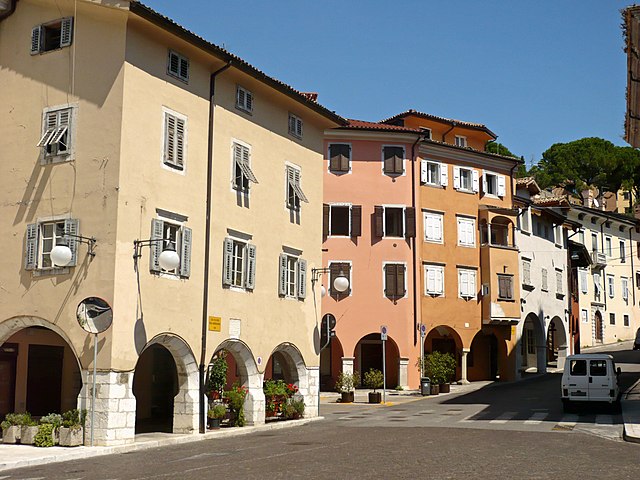Roman Catholic Archdiocese of Gorizia
The Archdiocese of Gorizia (Latin: Archidioecesis Goritiensis is a Latin archdiocese of the Catholic Church in Italy. The archiepiscopal see of Gorizia was founded in 1751 when the Patriarchate of Aquileia was abolished, and its territory divided between two new dioceses, Udine and Gorizia. The diocese of Gorizia was suppressed in 1788 for the creation of the Diocese of Gradisca and re-established in 1791 as the Diocese of Gorizia e Gradisca. It was raised again to a metropolitan archdiocese in 1830.
Gorizia Cathedral
Gorizia, colloquially stara Gorica 'old Gorizia' to distinguish it from Nova Gorica, is a town and comune (municipality) in northeastern Italy, in the autonomous region of Friuli-Venezia Giulia. It is located at the foot of the Julian Alps, bordering Slovenia. It is the capital of the Regional decentralization entity of Gorizia and is a local center of tourism, industry, and commerce. Since 1947, a twin town of Nova Gorica has developed on the other side of the modern-day Italy–Slovenia border. The region was subject to territorial dispute between Italy and Yugoslavia after World War II: after the new boundaries were established in 1947 and the old town was left to Italy, Nova Gorica was built on the Yugoslav side. The two towns constitute a conurbation, which also includes the Slovenian municipality of Šempeter-Vrtojba. Since May 2011, these three towns have been joined in a common trans-border metropolitan zone, administered by a joint administration board.

The old part of Gorizia seen from the castle in August 2008
The medieval center of Gorizia
The Leopold Gate, built in the late 17th century in honor of Leopold I, Holy Roman Emperor
The Strassoldo Palace, residence of the Bourbon family in exile





